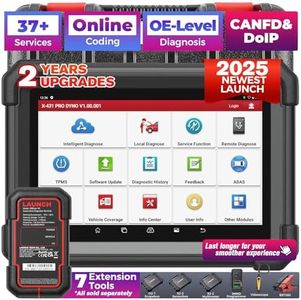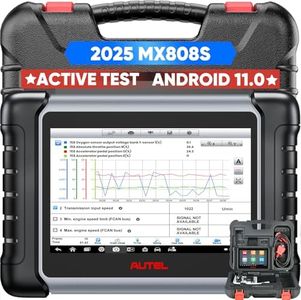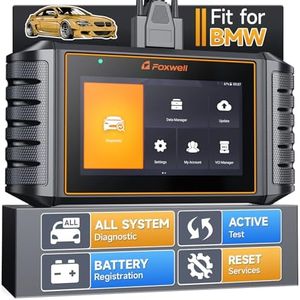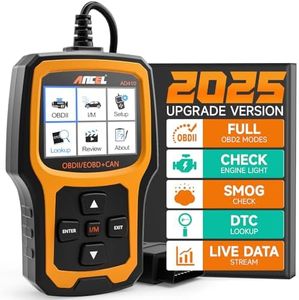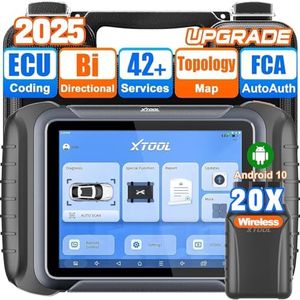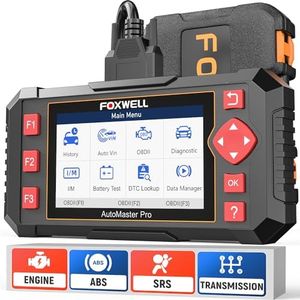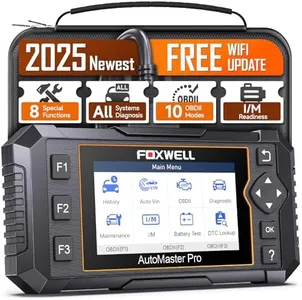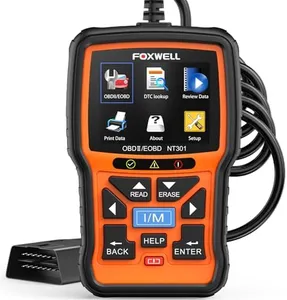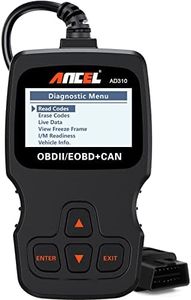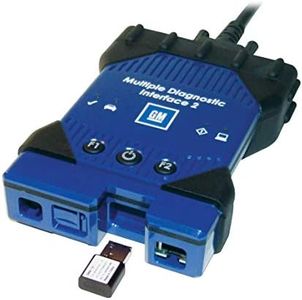We Use CookiesWe use cookies to enhance the security, performance,
functionality and for analytical and promotional activities. By continuing to browse this site you
are agreeing to our privacy policy
10 Best Automotive Scan Tools
From leading brands and best sellers available on the web.Buying Guide for the Best Automotive Scan Tools
Choosing the right automotive scan tool can make a huge difference in your ability to diagnose and repair vehicles efficiently. To find the best fit, think about what kind of vehicles you plan to work on, the level of detail you need in diagnostics, and how comfortable you are with new technology. Consider how you’ll use the tool—whether for home garage troubleshooting, professional shop work, or occasional roadside emergencies. Understanding key specifications will help you narrow down options and ensure the scan tool matches your needs.CompatibilityCompatibility refers to the range of vehicle makes, models, and years that the scan tool can communicate with. This is important because some tools only work with specific brands or vehicles manufactured after a certain year, usually when onboard diagnostics (OBD-II) became standard. Compatibility is generally divided into basic OBD-II-only tools, which fit most vehicles made after the mid-1990s, and advanced tools that cover a wider range, including older vehicles or specific manufacturers. Choose a scan tool that matches the age and type of vehicles you intend to service, ensuring that it will reliably interface with their onboard systems.
FunctionalityFunctionality describes how much the scan tool can actually do—ranging from reading and clearing basic error codes, to live data monitoring, component testing, and advanced functions like coding or programming modules. Entry-level tools just show trouble codes and basic data. Mid-level ones offer real-time readings, sensor data, and some basic reset features. Professional-grade tools provide in-depth diagnostics, bidirectional control, and special service functions. Consider what kinds of diagnostic tasks you want to accomplish. If you’re a DIYer, basic functions might be enough, but for in-depth repair or shop use, more features are worth looking into.
User InterfaceUser interface refers to how you interact with the scan tool—whether it has a built-in screen, uses buttons or touch, and how easy the menus are to navigate. Some scan tools have simple text displays with minimal information, while others offer color screens, graphs, and more visual aids. Ease of use can help prevent mistakes and speed up the process. If you’re not comfortable with complicated electronics, look for straightforward menus and larger displays. For advanced users, a complex interface might be acceptable in exchange for richer data.
ConnectivityConnectivity deals with how the scan tool connects to vehicles and other devices. Basic tools plug directly into the diagnostic port with a cable. Many modern ones have wireless options, such as Bluetooth or Wi-Fi, letting you view data on a smartphone, tablet, or computer. Some even store or export reports. Cable-connected tools are simple and reliable, while wireless ones offer more flexibility and can be more comfortable in use. Choose based on whether you want portability, the ability to analyze data on other devices, or just a simple plug-and-play experience.
Updates and SupportUpdates and support means how often the scan tool’s software is refreshed to keep up with new vehicles and fault codes, and what kind of help you can get from the manufacturer. Regular software updates are important to ensure the tool stays useful as vehicles evolve. Some scan tools come with free lifetime updates; others require paid subscriptions. Good customer support can help resolve problems or answer questions. Think about how often you plan to update your tool and how much technical help you may need, especially if you're new to automotive diagnostics.

